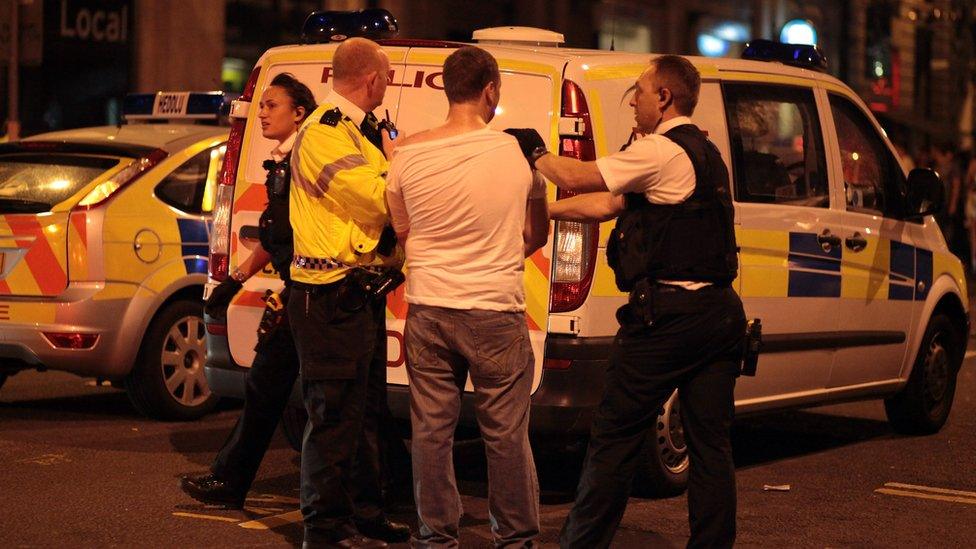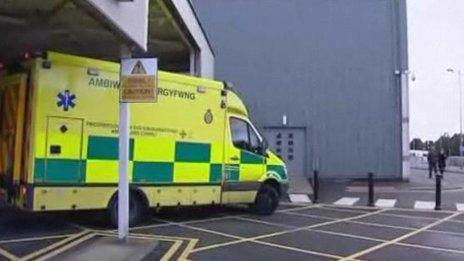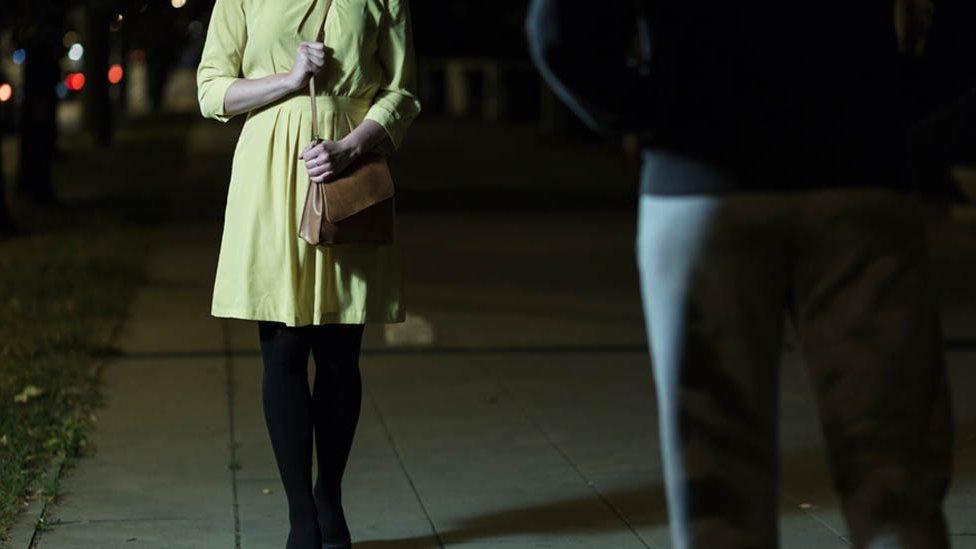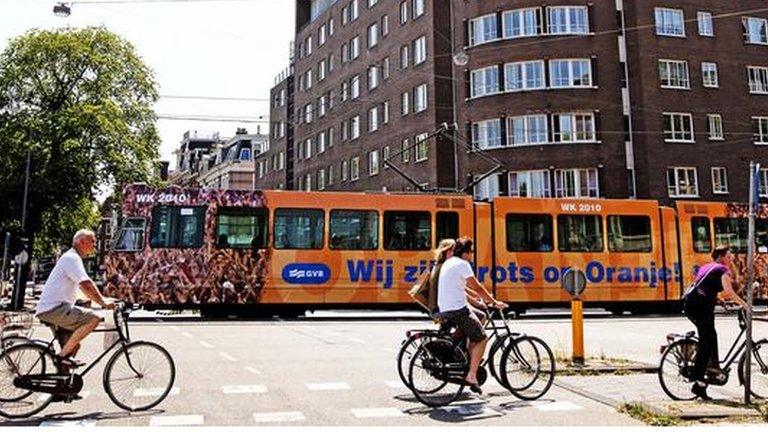The Cardiff Model: Plastic pint glasses to real-time CCTV
- Published

The introduction of plastic glasses in pubs and clubs was a hot topic of debate when first mooted about 15 years ago.
The idea was to reduce glasses being used as weapons in alcohol-related violence, but opponents said drinkers would not accept the change.
However, since then, more and more places have been using them.
It is arguably the most-well known change to have come out of a scheme to reduce night-time violence which was pioneered in Cardiff and adopted by cities across the world.
The Cardiff Model for Violence Prevention was launched in 1997 to fill gaps in police knowledge by anonymously gathering information at hospitals from victims of violence.
It was started by Prof Jonathan Shepherd, who came up with the idea while researching for his PHD, after learning up to two thirds of incidents which resulted in hospital treatment were not known to police.
He said reasons for not reporting incidents included people being afraid of reprisals and nightspots fearing they may lose their licence.
And the solution was very straightforward.
Cardiff model: How does it work to cut violence?
"It is a simple process but those are the best ideas," he said.
"But it certainly wasn't obvious before we did this research that the police don't know about a whole lot of violence which results in emergency treatment.
Prof Shepherd explained the three elements to the "Cardiff Model".
"First it's collecting information in accident and emergency departments about precisely where people are getting injured, which street location, which school, which park, which licensed premises, which weapon was used and times and date," he said.
"The second element is the anonymisation of that information. So it's not about sharing information about individual patients with local authorities and the police.
"The third element of the Cardiff Model is a violence prevention board which brings people together from police, health, local authorities and voluntary sector to turn this unique information into practical prevention action."
As well as plastic glasses, other changes introduced by the Cardiff Violence Prevention Board have included real-time CCTV usage to help police respond quicker to incidents along with pedestrianised areas around nightlife and better licensing for bars and clubs.
He added: "The most important thing from the evaluations is that this way of preventing violence on a collaborative basis actually works.

Plastic beer glasses are among the most notable changes the public has seen from the scheme
"The studies that have been published show that where this is done, violence that puts people in hospital is reduced by 40% compared to cities where this model is not implemented.
"The same goes for serious violence recorded by police where this model is introduced."
The model has been so successful, the UK government made it part of its crime prevention programme which has led to more towns, cities and A&E departments taking it on.
"The thing I'm most proud of is the violence falling across England and Wales," said Mr Shepherd who is a professor of oral and maxillofacial surgery at Cardiff's University Hospital of Wales.
"In Cardiff, there have been almost 1,000 fewer hospital admissions following violence between 2002 and 2016 and around 65,000 fewer A&E attendances following violence.
"As a surgeon myself, clearly that's fantastic news as it takes a lot of work away and it's very costly to deal with 65,000 people who are injured especially when most of this happens at nights and weekends when most health services are stretched."
It has also been used in parts of United States, Australia, South Africa and Netherlands.
The first international interest came from Amsterdam in 2009 and was followed up in the United States in Atlanta, Philadelphia and Milwaukee.
Since then, the leading national public health institute in the US - Centers for Disease Control - has recommended towns and cities implement the Cardiff Model.
And about 18 months ago, the Australian government funded the implementation of the model at hospitals in Sydney, Melbourne, Canberra and two other smaller cities.
Founder Prof Jonathan Shepherd is proud of the Cardiff Model's success
"It's very gratifying that this started in Wales, in Cardiff, so this is known as the Cardiff Model," Prof Shepherd said.
"It's extraordinary to go to meetings in Philadelphia and Sydney where the label on the door is 'Cardiff Model implementation'."
Prof Shepherd would like to see the model being used more widely across the world in the longer term, but said the focus should be on key areas first.
He added: "Because this is a low-tech enterprise, it's particularly relevant to low and middle-income countries.
"This is not about treating people with a fancy new drug or a technological piece of surgical kit. It's about simple information sharing and use.
"That can be done in a poor town in a poor country just as much as in a western country.
"I think it's relevant pretty much everywhere but it's particularly relevant where violence rates are high - so in South American countries, in African countries, for example.
"Although it would be clearly nice to see this implemented everywhere, there are priority areas and I think focusing effort - at least to start with - over the next number of years should be on those countries which have a real problem with violence."
- Published18 April 2012

- Published15 March 2016

- Published11 December 2012
